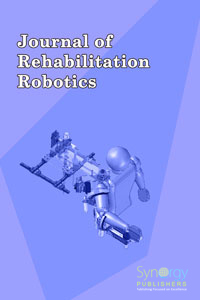
Effects of Motor Cortical Stimulation during Planar Reaching Movement Pages 42-53
Crystal L. Massie1, Priya Narayanan3, Shailesh S. Kantak1, Lauren M. Jones-Lush1,2, Timothy N. Judkins1,4 and George F. Wittenberg1,3,5
Departments of 1Physical Therapy & Rehabilitation Science, 2Anatomy & Neurobiology, 3Neurology; University of Maryland School of Medicine, Baltimore, MD 21201, USA; 4Robotics and Electromechanical Systems, Intelligent Automation, Inc., Rockville, MD 20855, USA; 5Geriatrics Research, Education & Clinical Center, Veterans Affairs Medical Center, Baltimore, MD 21201, USA
DOI: http://dx.doi.org/10.12970/2308-8354.2013.01.01.5
Download PDFAbstract: Background: The purpose was to examine the effects of single pulse transcranial magnetic stimulation (TMS) over primary motor cortex delivered at different times during a center-out reaching task in a robot reaching environment.
Methods: Eleven right-handed subjects participated. Movement hotspots and thresholds were determined for each subject, and the stimulation intensity was set at 120% of the movement threshold. TMS was delivered at rest and when subjects performed a series of reaching tasks. The 5 different conditions were: no stimulation, sham stimulation, and stimulation at 150, 500, or 1000 ms post go cue. Outcome measures included TMS-evoked movement during rest and in the 150ms condition, trajectory deviations (no stimulation, sham, and 150ms conditions), and peak velocity (PV), path length, reaction time, acceleration time, and deceleration time for all conditions.
Results: When TMS was applied at 150 ms, the evoked path lengths were significantly shorter than at rest and had less deviation than the no-stimulation condition (p < 0.05). Peak velocities were lowest during the no-stimulation condition and highest during the 500ms condition (p < 0.05). Path lengths were significantly shorter during the no-stimulation, sham, and 150ms condition compared to the 500ms and 1000ms conditions.
Conclusions: TMS applied during the reaction time phase suppressed movements evoked by TMS, decreased trajectory deviations, and shortened path length, while TMS delivered after movement onset increased PV and path length. TMS stimulation may be delivered to enhance movement parameters and potentially facilitate reach training in the robotic rehabilitation environment.
Keywords: Kinematics, Robotics, TMS, Reaching, Rehabilitation. Read more

